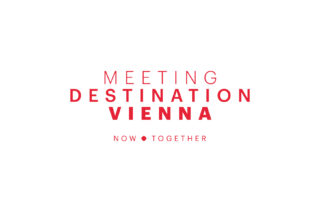Around
Vienna
Around
Vienna
Expolore nearby Europe
Please make sure to check all current travel conditions.

By loading the map, you agree to Google's privacy policy.
Learn more
AUSTRIA

Salzburg
3h by car, 2.5h by train, 50min by plane
Salzburg is one of the most renowned cities in Austria and Europe and has possibly the best-preserved old town center full of beautiful baroque architecture. The old town is listed as a UNESCO World Heritage Site.
This charming Austrian town is known for being the birthplace of the classical composer Wolfgang Amadeus Mozart, and is home to Mozart’s residence and Mozart’s birthplace, now a museum. But Salzburg has much more in terms of historical sights and fun attractions, from museums and gardens to churches and mountains!
Some of the things you shouldn’t miss are: Salzburg Fortress, Hellbrunn Castle/Palace and zoo, Salzburg Cathedral, the Getreidegasse for shopping, The Eagles Nest and Gaisberg Mountain, St. Peter’s Abbey and around Salzburg Hangar 7 (an aeronautical museum with bars, cafes, and restaurants).
Cruise on the Danube
The 2.888 kilometer long Danube, known as the ‘Queen of European Rivers,’ crosses or borders on ten countries, from its sources in the Black Forest of Germany to the natural wonder of the Danube delta. Coronation cities of former rulers with their sumptuous architecture can be found along its banks. These cultural centers and the diverse landscapes of the Danube have traditionally inspired artists from all over Europe to create fabulous works of art.
The Danube makes its way to the Black Sea via the picturesque Wachau valley, the wild Carpathian Mountains and the peaceful Danube delta. Here the Danube is home to a diverse range of flora and fauna. Along the way it passes through Vienna, Budapest, Bratislava and Belgrade, promising a cruise full of cultural and natural highlights. The Danube is a popular destination for river trip enthusiasts, and rightly so.
SLOVAKIA

Bratislava
1.25h by car, 1.5h by train
Slovakia’s capital oozes style, culture and history. Until 1919, Bratislava was part of Hungary. From the 16th century on the Hungarian crown jewels were kept at Bratislava Castle, and eleven kings and queens of Hungary were crowned in the city’s cathedral.
The city’s position on the Danube and at the nexus point of trade routes helped it grow into a center of commerce and power in that time. The city’s deep layers of history are all exposed, so be prepared for palaces, castles, churches and outlandish Soviet megastructures.
Bratislava has many sights to offer: Slavín War Memorial, St. Elizabeth’s Church (Blue Church), Bratislava Castle, the historic center of Bratislava, St. Martin’s Cathedral, the Old Town Hall, the Slovak National Gallery, Michael’s Gate, the Danubiana Meulensteen Art Museum, Grassalkovich Palace, Primate’s Palace, Most SNP (the famous bridge), Hviezdoslavov Square, Maximilian’s Fountain, Heydukova Street Synagogue, Galéria Nedbalka, Kamzík TV Tower, the Slovak National Theatre, and Eurovea for shopping…
GERMANY

Munich
4.5h by car, 4.25h by train, 1h by plane
Bavaria’s capital is filled with beloved sights, opulent Baroque churches and museums of the highest order. Munich’s Kunstareal contains a cluster of art museums with so many masterpieces it’s difficult to know where to begin. These invaluable collections were assembled by the Wittelsbach monarchs who ruled Bavaria up to the 20th century. Visit their two palaces in the city, or view the Alps from the top of the Rathaus (City Hall) and St. Peter’s Church.
Munich is also the home of some world-famous German exports like BMW, FC Bayern and the incomparable Oktoberfest, which takes place for two weeks at the end of September every year. Sights worth seeing: Alte Pinakothek, Neue Pinakothek, Deutsches Museum, BMW Museum and BMW Welt, Munich Residenz, Neues Rathaus, St. Peter’s Church, Allianz Arena, Englischer Garten, Olympiapark, Hofbräuhaus, Hellabrunn Zoo, Viktualienmarkt.
HUNGARY

Budapest
3h by car, 3h by train, 45min by plane
Hungary’s capital city of Budapest is actually made up of three unified cities, with Buda and Óbuda on the west bank of the Danube and Pest on the east bank. Much of the city has been granted UNESCO World Heritage Site status, and many visitors consider the city to be amongst the most beautiful cities in Europe.
Budapest mixes its fascinating history with a laid-back contemporary artistic style. The city offers a wide range of activities for visitors, from museums to thermal spas.
Don’t miss out on the following sights: Parliament Building, Gellért Baths, Heroes’ Square, the Danube Promenade, the House of Terror (a museum about the Fascist and Communist regimes which ruled Hungary during the 20th Century), St. Stephen’s Basilica, Fisherman’s Bastion, Faust Wine Cellars, Memento Park, Dohány Street Synagogue, Ecseri Flea Market, Ruin Pubs, Central Market Hall, Buda Castle Hill Funicular, Citadella, and Széchenyi Thermal Baths.
CZECH REPUBLIC

Prague
4h by car, 4.5h by train, 50min by plane
Prague’s history dates back over a thousand years and rivals any other European city in terms of sheer beauty, but has much more to offer than just a pretty face. Bisected by the Vlatava River, Prague will astound even the most well-traveled tourist with its Gothic grace and Renaissance architecture, its many world-class museums and baroque style churches and bridges. Explore the medieval streets, meander down the riverside and if the sightseeing becomes too tiring you can always relax with some of the finest lagers in the world.
Don’t miss these Prague sights: Infant Jesus of Prague, Old Town Square, Astronomical Clock, Charles Bridge, Jewish Ghetto, Prague Castle, St Vitus Cathedral, Golden Lane, KGB Museum, Lennon Wall, Mala Strana, Petrin Hill, Letna Park, and Jelení Príkop.
ITALY

Venice
7h by car, 11h by train, 1h by plane
Venice is a city of immense beauty and historical significance that is unlike any other city in Italy. As the capital of the Veneto Region of Northern Italy, Venice lies on 117 small islands that are connected by a series of bridges and separated by a network of canals.
During the Middle Ages and the Italian Renaissance, Venice was an extremely powerful stronghold that served as a major financial and military center and was renowned worldwide as a place of cultural and artistic development. Today, Venice is one of the most popular cities for tourism in the world. Sights like St. Marks’s Basilica and the Grand Canal draw millions of visitors to this small group of islands on an annual basis.
While you’re there you should explore: St. Mark’s Basilica, St. Mark’s Square, Canale Grande, Ponte di Rialto, Gallerie dell’Accademia, Venice Lido, Doges Palace, Bridge of Sighs, Ride a Vaporetto through the Grand Canal, San Marco Campanile, San Marco Campanile, San Giorgio Maggiore, Murano, Chiesa di Santa Maria Assunta, Basilica di Santa Maria della Salute, and Torcello Island.



